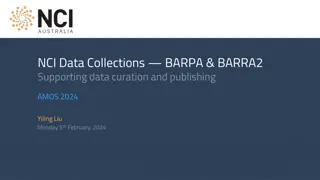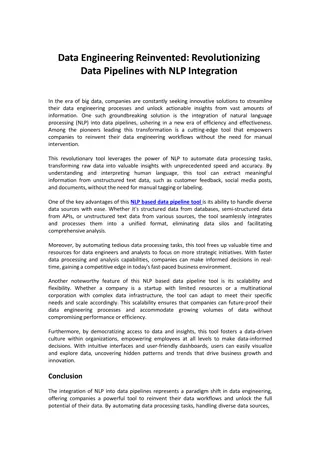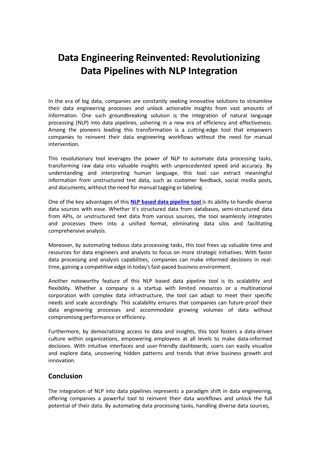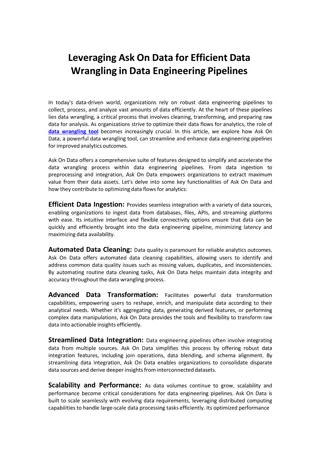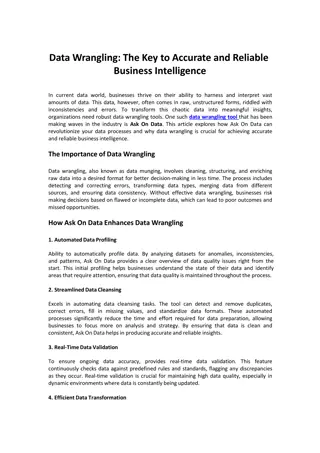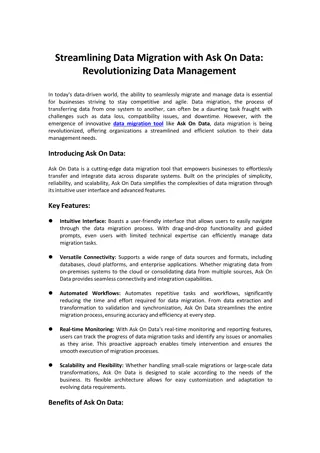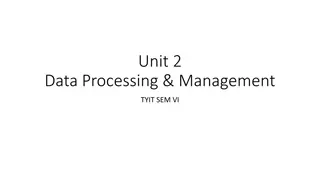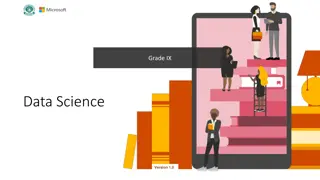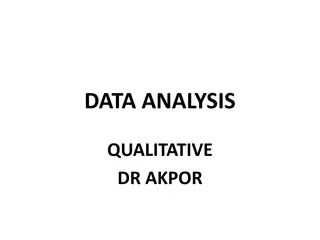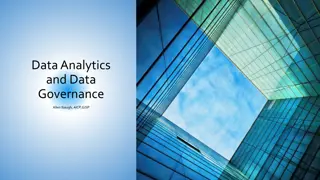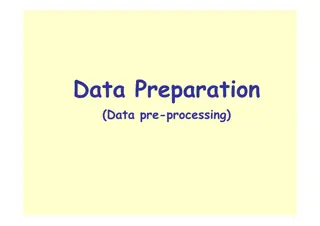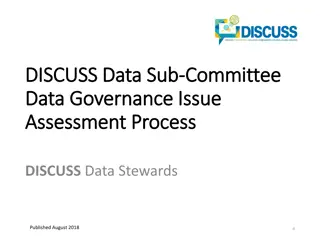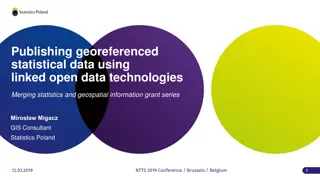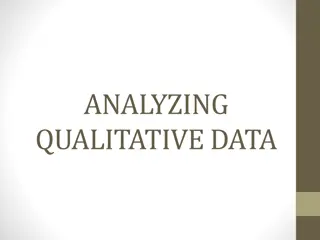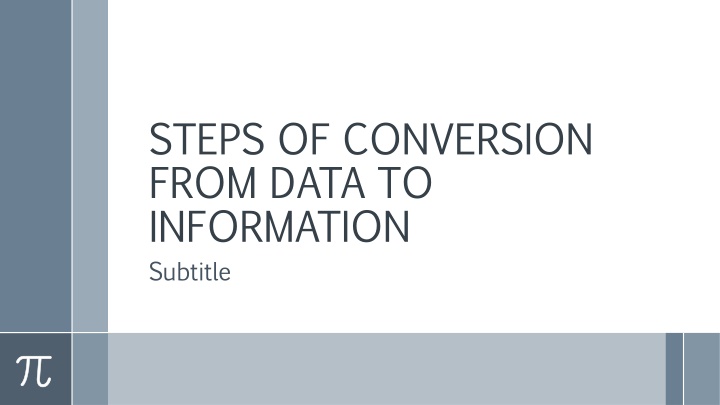
Steps of Data to Information Conversion Process
"Discover the steps involved in converting raw data into valuable information: collection, organization, validation, processing, interpretation, and communication. Examples illustrate the transformation process for insightful decision-making."
Download Presentation

Please find below an Image/Link to download the presentation.
The content on the website is provided AS IS for your information and personal use only. It may not be sold, licensed, or shared on other websites without obtaining consent from the author. If you encounter any issues during the download, it is possible that the publisher has removed the file from their server.
You are allowed to download the files provided on this website for personal or commercial use, subject to the condition that they are used lawfully. All files are the property of their respective owners.
The content on the website is provided AS IS for your information and personal use only. It may not be sold, licensed, or shared on other websites without obtaining consent from the author.
E N D
Presentation Transcript
STEPS OF CONVERSION FROM DATA TO INFORMATION Subtitle
COMMUNICATION COLLECTION INTERPRETATION ORGANIZATION PROCESSING VALIDATION
Gather raw data from various sources, such as databases, surveys, observations. sensors, or STEP 1. COLLECTION COLLECTION Ensure the data is accurate, relevant, and complete.
Structure and categorize the data into a logical format. STEP 2. ORGANIZATION ORGANIZATION Use tools like spreadsheets, databases, or data management systems for systematic arrangement.
Checks data for accuracy, consistency and reliability STEP 3. VALIDATION VALIDATION Remove errors, duplicates, or irrelevant data through cleaning and preprocessing.
Analyze meaningful patterns, trends, or correlations. and manipulate the data to derive STEP 4. PROCESSING PROCESSING Apply statistical tools, algorithms, or software for transformation.
Assign processed data. context and meaning to the STEP 5. INTERPRETATION INTERPRETATION Use visualization tools like charts, graphs, or dashboards to make the information understandable.
Present the information in a format suitable for decision-making or problem-solving. STEP 6. COMMUNICATION COMMUNICATION Share the insights with stakeholders through reports, presentations, systems. or automated
EXAMPLE 1. Collection A retail company collects customer purchase data from point-of-sale systems, loyalty programs, and online sales portals. 2. Organization The company organizes the collected data into categories such as product names, purchase dates, customer demographics, and sales amounts in a structured database. 3. Validation Duplicate purchase entries are identified and removed, invalid entries (e.g., missing product IDs or purchase amounts) are corrected or flagged for review. 4. Processing The company applies algorithms to calculate metrics such as total sales, average transaction value, and purchase frequency for each customer. 5. Interpretation Sales trends are analyzed to find that certain products sell more during specific seasons, or that a particular demographic prefers premium products. 6. Communication A dashboard is created to present the insights visually, showing monthly sales trends and demographic preferences, which is shared with the marketing team to tailor campaigns.

